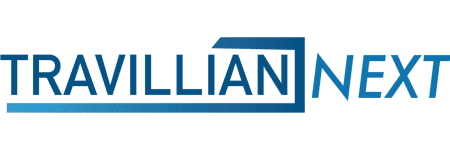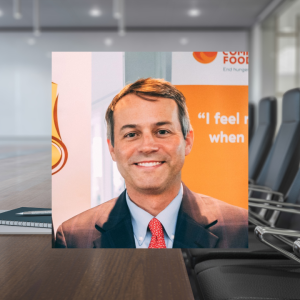Brian Love, Travillian’s Head of Banking and Fintech, has a timely Q&A with Mary Jayne Crocker, EVP Chief Operating Officer at Bridgewater Bank. Written transcript of the Video Conversation that was released on August 25th.
Culture
Mary Jayne Crocker: You know, I think it comes back to Jerry [Founder, CEO & President Jerry Baack], I think at the point where he decided to build a different bank, one of his big things was being non-traditional or unconventional.
He really wanted to build a bank where things were different where people were enabled and empowered to make a difference and to make their own decisions. And his, his concept was all about not building a bank that was like every other bank. So be it the way we advertised, the way we hired, the way we build our buildings, the way we built our branches, anything that was unconventional was how he envisioned Bridgewater to be.
And so that dictates our culture. And when you’re building a culture and you have the luxury [00:04:00] of starting from ground zero, your culture, you really have an opportunity to build the space that you want to build and put the people in the places that you really want to have in those places. You want to make sure that the people that you’re hiring think like you, you want to make sure that they have the same kind of values that you do.
So we didn’t, we actually didn’t start with our core values. At the very beginning, we started them in 2010, as we were starting to grow and have more and more people that we were hiring on. So we identified five core values that today hold very true. And those core values are based on how Jerry works.
They’re responsive, Jerry’s super responsive. They’re dedicated. You know, dedication is, is really, really important. Obviously being unconventional was important. We wanted people who were really growth oriented, so we didn’t want people who were going to come in and sit in a position for a long time, but rather people were really looking to grow.
And then we wanted people, obviously, who were accurate. It’s a bank. First we have to be accurate, but all of [00:05:00] those traits emulated from how Jerry does business and how he envisioned the bank to be. So I think, you know, our culture is just a representative of who he is. And as we’ve grown now, we have, you know, 220 people in seven branches.
And you see those values all through the organization. And I think that’s what, one of the things that drives culture.
Core Values
Mary Jayne Crocker: There are probably four things that are really important in the organization.
One is that we’re really, really transparent. So transparency, transparency is evident throughout the bank. When we do a strategic plan, we do our strategic planning session three times a year. We do one major one but then two kinds of mini strategic planning sessions. Everybody in the organization actually goes through a strategic planning session.
And that strategic plan is shared on two pages across the entire organization. [00:06:00] So I think there’s real transparency in what we’re trying to accomplish. And, and then the way that we communicate that out to the organization. I think the other piece is, we are a highly accountable organization. So every single person in the organization has this work hard measuring how they’re contributing to the overall goals of the organization.
And then also that also people also all have anywhere between one and seven projects that they’re working at at any given time. And they’re all working in that, on those projects within the same timeframe. So if somebody starts and ends the project at exactly the same time as somebody else in the same organization in the organization does.
So I think that accountability piece and being able to know hold people accountable, because there’s such transparency around what people are doing. is important. There’s a lot of continuity of practices. Everybody has the same cadence of weekly meetings. Everyone follows the same agenda. So the buy-in across the organization is really high because everything, everybody does things at the same [00:07:00] time, within the same framework, using the same kind of underlying frameworks and templates.
And then we make sure that we recognize people as often as possible. So we do have recognition at our all team meetings. We have recognition weekly on our SharePoint site with core value recognitions. We have a lot of team building exercises. We are already a bank that’s pretty well networked, but we network internally as well.
So we have thirsty Thursdays, which is every third and the third Thursday of every month, we get together as a team. and have a happy hour and someone entertains. We’ve had a band. We’ve had a musician and a magician come and perform for us. So we do a lot of recognition and a lot of kind of team building as well.
So those are all ways that you know, we ensure that people play together, have fun together, work together. And again, that goes back to Jerry. I mean, Jerry definitely likes to work hard and he also likes to play hard. So [00:08:00] those two, he doesn’t, he doesn’t really separate. I mean, he brings a lot of joy and a lot of play and a lot of fun things to the workplace as well.
Onboarding Process
But once we bring people in, we do make [00:10:00] sure that they feel part of the team right away. That was definitely a little harder than during COVID, just because people were relocated. We are all back in the office now and so onboarding’s back on track. But when we do onboard someone, we give them a 90 day plan.The 90 day plan is essentially at their, at their own discretion as to how fast they want to complete that. It includes everybody they need to meet. All of their top five priorities for the first 90 days. And for people who are at a higher level, we also give them a SWAT analysis. So we allow them the opportunity to do a SWAT analysis and then present back to leadership team what they saw in their first 90 days, as far as strength, weaknesses, opportunities, and threats. And that’s been really helpful as a leadership team to see kind of how people perceive us when they come in. We give everyone an ambassador. So somebody unrelated to their position that just kind of can tell them where should I go get lunch?
People have spoken really highly of our onboarding program. And I do think that they feel really acclimated by the time they get through their first 90 days. So, you know, we spend a lot of time on it.
Recruitment and Retention
So somebody [00:15:00] like our chief lending officers started as a credit analyst now he’s our chief lending officer and he’s just turned 36 yesterday. So, I think people see opportunities at Bridgewater. They may come in at the ground level, but there’s lots of opportunities for them to develop.They like being together. Like I had suggested earlier, we do a lot of activities. We have a brand new building that we just built with a great brand new deck and the deck every single night, there’s people out on the deck. We have a barbecue, we have a smoker, we have a fireplace, we have bags, people like working with their coworkers.And that goes back probably to the way we hire people that have similar kinds of attributes and values. We also pretty much always hire people that have university education. And so they’re all growth oriented and they’re all interested and curious about learning. And I think that, you know, that’s something that people have in common.So they see an opportunity and they can develop into it. As we’re hiring currently, we’ve had so much acquisitions in this area, [00:16:00] geographically. And so we’ve really taken advantage of identifying someone that we want at a different bank.
Again, Jerry has been really instrumental in identifying talent that he wants to bring on board. And then as he’s seen opportunities kind of courted that person along the way. And as soon as there’s an opportunity for them to change positions, he makes sure that he’s in there to make sure that person knows that Bridgewater would be a great home for them. So there’s a courting process that we use for a lot of our producers and that’s, you know, tribute to Jerry and making sure that he gets the people that he really sees out there that are standouts. And when you bring those people in too they bring their people with them that helps build our credit team that helps build our business development team.
And certainly our servicing team. In addition to that, we’ve been fortunate as you know, Brian to work with you and have built our leadership team based on the work that Brian’s done. Knowing what our culture is, knowing what our skillset is and being open-minded [00:17:00] about not having someone come in that fits in the box or the job description completely. I think Brian, you’ve been incredibly creative in finding the right people to fill some of our really important positions on our leadership team. And I think that’s just being creative, being investigative and understanding what we needed and when we didn’t necessarily know that that’s what we needed.
Culture Fit
We make sure that we move them out pretty quick. We do have a right person, wrong seat phrase. So sometimes it’s the right person and they’re a big culture fit. They’re just in the wrong seat and finding a new home for them inside Bridgewater, we’ve done plenty of that. [00:20:00] But we’ve also had people that just, you know, they’ve been here for four or five months and they’re not working.And we part ways. With our growth as well I think lots of times people, the position outgrows that person. And that those are, those are sadder goodbyes, because those people have been instrumental in getting us to where we’ve gotten to, but they really can’t get us to the next level. Those are hard.And I think what you have to be thinking about is they’re better off. And as you’re sitting, waiting to try to figure out what to do with this person, the rest of the organization is also watching and knowing you’re not being authentic about really having the right person in the right seat.
So we have a, we have a conversation about, are you a core value fit? We go through all the core values and then we have a conversation around, get it, want it, we have you understand this job. Do you want this job? And then do you have the capacity to truly do this? And that certainly leads to a conversation that starts the exit.And you know, we’ve been really fortunate of the nine people that we started with. We still have five of the original people. And some of them, you know, we had one person who was our CFO for a long time. And then eventually that job has got too big.
And that person’s now in a risk, in a risk job instead, and we’ve been able to manage people down and manage people up. So, I can’t say that it’s worked every single time. We certainly had some struggles on that front as well. But for the most part, we try to be respectful of everyone and know that everyone has something to [00:22:00] offer.
Maybe it’s not to Bridgewater, but you know, there’s a talent that they can take elsewhere.
Travillian’s Banking and FinTech Practice provides Search and Talent Advisory services to depository institutions across the country. Established in 1998, the firm has built a unique platform that touches every corner of the industry. To learn more, click here, or get in touch below!
|
Brian Love, Head of Banking & Fintech
(484) 680-6950 | blove@travilliangroup.com |






